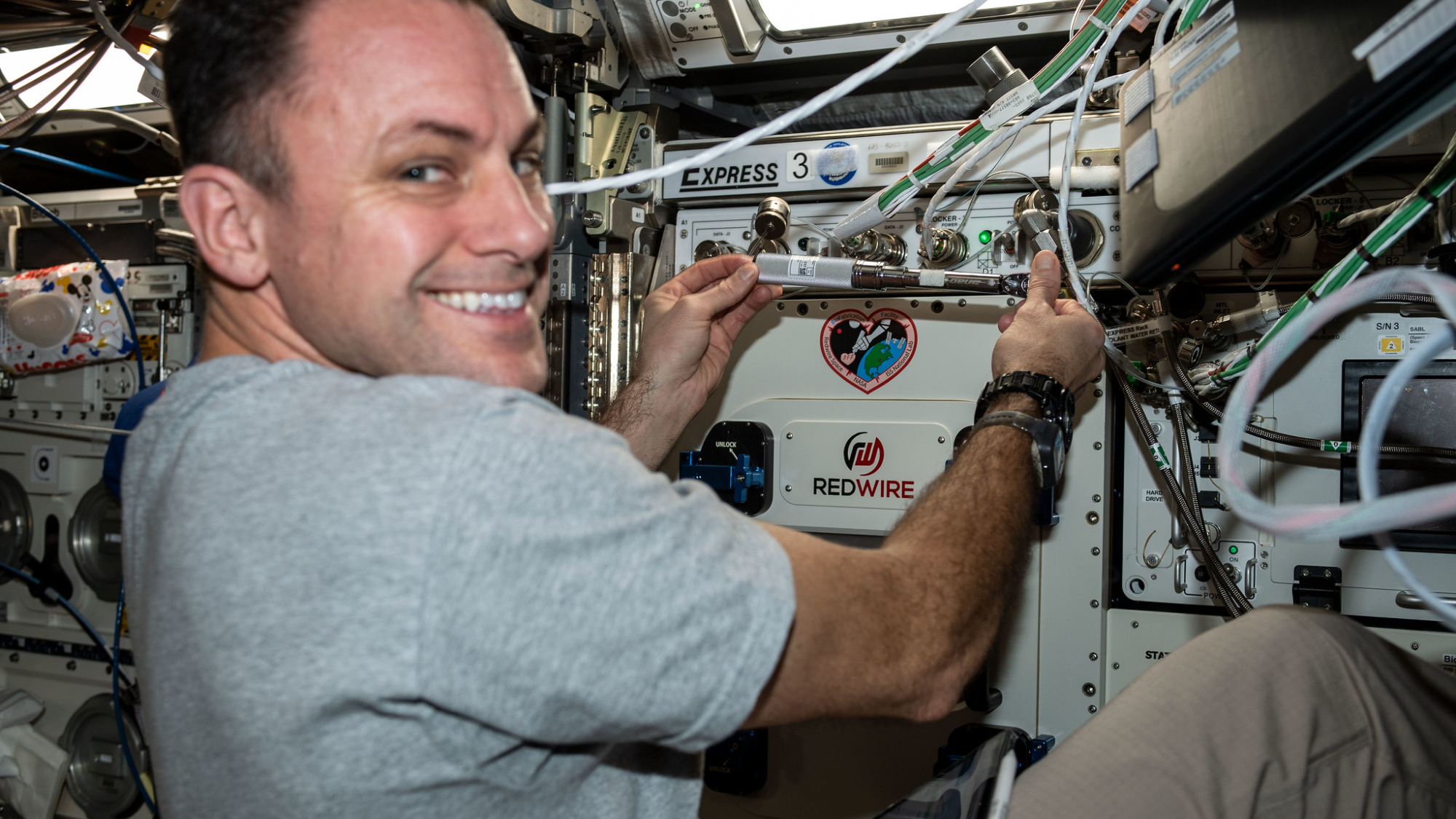Astronauts just 3D-printed knee cartilage in space for the 1st time and it's as weird as it sounds
The microgravity cartilage will help treat common knee problems.

In a big leap for human health, knee cartilage was manufactured in space for the first time.
A 3D-printed human knee meniscus was created on the International Space Station, in a facility with Florida-based Redwire Corp. The milestone effort will allow for improved knee treatments, which are common among military service members and aging seniors.
"This is a groundbreaking milestone with significant implications for human health," Redwire executive vice president John Vellinger said in a statement Thursday (Sept. 7). The meniscus has already been analyzed on Earth, having returned with the SpaceX Crew-6 astronauts during splashdown on Sept. 4.
Related: SpaceX's Crew-6 astronauts splash down after 6-month stay on ISS
In general, manufacturing items in space allows advantages that are not easily accessible here on Earth. Microgravity conditions, for example, do not cause items to be pulled or stretched due to Earth's gravity, which may warp the desired shape.
Redwire currently has 10 research facilities operating on the ISS, and more new research is coming soon. In November, Redwire will send several pharmaceutical payloads on a SpaceX Dragon cargo mission known as CRS-29. Among them is an experiment to bioprint cardiac tissue.
Redwire upgraded its 3D BioFabrication Facility in January ahead of the knee meniscus manufacturing. The upgraded facility "allows greater temperature control when printing with bioinks that are sensitive to temperatures," officials stated at the time.
Breaking space news, the latest updates on rocket launches, skywatching events and more!

Elizabeth Howell (she/her), Ph.D., was a staff writer in the spaceflight channel between 2022 and 2024 specializing in Canadian space news. She was contributing writer for Space.com for 10 years from 2012 to 2024. Elizabeth's reporting includes multiple exclusives with the White House, leading world coverage about a lost-and-found space tomato on the International Space Station, witnessing five human spaceflight launches on two continents, flying parabolic, working inside a spacesuit, and participating in a simulated Mars mission. Her latest book, "Why Am I Taller?" (ECW Press, 2022) is co-written with astronaut Dave Williams.
